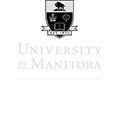
PRESENTERS
FABRICATING TRUTH
PALLAVI SWARANJALI, Carleton University
Forging Architecture: The Contronymic Nature of Architectural Creation in the work of
STEVEN BEITES, Laurentian University
KATIE GRAHAM, Carleton University
Architectural Storytelling in Virtual Reality: How VR Can Expand on Architectural Perception
TED LANDRUM, University of Manitoba
Poetry as Research: Fabricating Architectural Truth
FABRICATING IN SITU
SCOTT GERALD SHALL, Lawrence Technological University
Borrowed Intelligence: Leveraging Industrial Fabrication To Evolve Building Production
NAHID AHMADI, Carleton University
Asphalt Deserts: Rethinking the Architecture of Surface Parking Lots
DIETMAR STRAUB, University of Manitoba
A Beautiful Waste of Time: Operating a Snow Academy
JENNIFER SMITH, Auburn University
INCREMENTAL: Resilience through Disaster-Relief Housing
BRYAN HE, University of Manitoba
Making of the Hakka Vernacular
With earth, water, fire, wood, and metal, the Hakka people of China have evolved a way of living in and with the world. The development of the Hakka people and
culture can be traced back to 317-589 in the East Jin Dynasty, from the Central Plain regions to the southern regions, through five major mass migrations, for over
1700 years up until the beginning of the republic of China in 1912. The Hakka is the only Han Chinese group that is named by the language it speaks (Hakka), as
opposed to its geographical region (e.g. province, county, or city).
The Chinese character of Hakka (客家) is literally translated to “guest families.” The name emphasizes the Hakkas’ view that ancestral roots, guests and families
are unlimited to time and geographical origins. The way the Hakka people inhabit the land by fabricating in situ, growing in situ, cultivating in situ, and worshipping
in situ, reflects the Hakka’s view of understanding oneself in situ.
The land in the mountainous regions of China along the borders of three southern provinces: Jiangxi, Fujian, and Guangdong is the homeland of the Hakkas.
Hakka is a culture that is dependent on the land it dwells, and interwoven with the landscape that supports the culture to flourish. For the Hakkas, to dwell in the
landscape means to transform a natural place to enable generations of Hakkas to secure the well-being of its people from birth to death, from cradle to grave. This
paper illustratesthis symposium’s theme, fabrication in situ, through documentations and case studies from a field study of Hakka buildings in the summer of 2017,
with scholarly research and historical references. This theme will be further explored through the study of vernacular Hakka building traditions and techniques, while
reflecting on the slow but collective method of architectural construction and practice, in relationship to the building and development of the Hakka culture. The
demonstration of the Hakka way of fabricating in situ aims to invigorate our sense of the world in relationship to human nature, and calls for a nuanced discourse on
cultural and environmental sustainability in the contemporary milieu.
SOCIAL FABRICS
VALENTINA DAVILA, McGill University
Down the Back Stairs: Servants’ Spaces in Montreal’s Square Mile
LAWRENCE BIRD, Winnipeg
ELLEN GRIMES, School of the Art Institute of Chicago
History's Future Fabrics: New Models for Historic Ecologies
NIKOLE BOUCHARD, University of Wisconsin
RYAN STEC, Carleton University
Making Public Space: Examining Walter Lippmann & John Dewey’s pragmatism as a
constructive expansion to the spatial theory of public space
MEDIATING FABRICS
LANCELOT COAR, University of Manitoba
Lignes d’erre: Tracing the History and Future of Force Flow in Structures
FEDERICO GARCIA LAMMERS & JESSICA GARCIA FRITZ, South Dakota State University
Master Building Complex Forms in the Absence of Graphics
JOE KALTURNYK, Winnipeg
The Temporary and the Intermediate: Strategies for a Better Dinner
photo: Landon Lucyk [M2 Architecture]

The 2018 Atmosphere Symposium is co-chaired by: Lisa Landrum and Liane Veness with the support of the Faculty's Cultural Events Committee and the Centre for Architectural Structure and Technology (C.A.S.T.); web design and graphics support by Tali Budman (ED4 Architecture student), and administrative support from Brandy O’Reilly (Faculty of Architecture, Partners Program).
Questions? Please contact info@atmos.ca